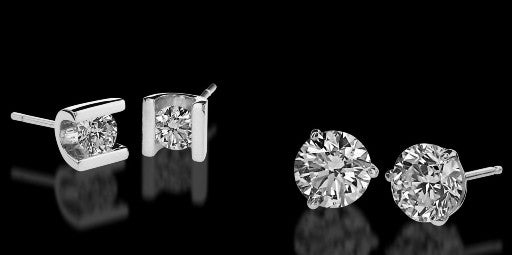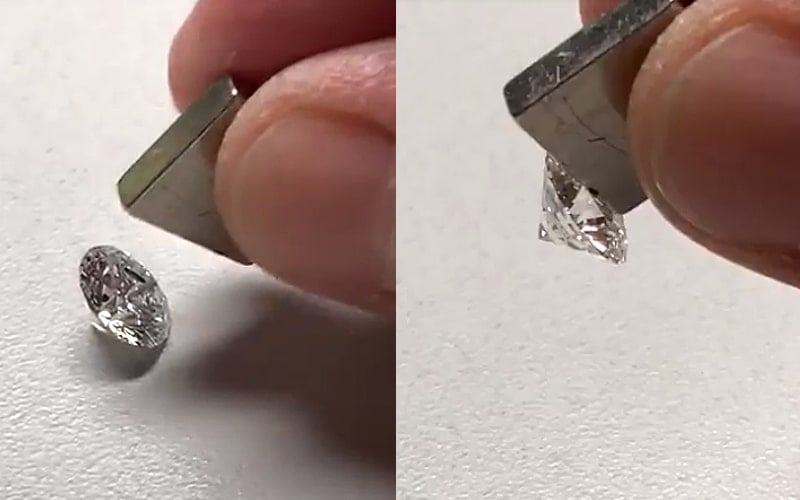When it comes to purchasing diamonds, you might hear a lot about the 4Cs: Cut, Color, Clarity, and Carat. But what do these terms really mean, and why should they matter to you? Let’s dive deep into the world of diamonds and break down what the 4Cs are all about!
Table of Contents
Introduction: The Importance of the 4Cs
Why the 4Cs Matter
Understanding the 4Cs is crucial for anyone looking to buy a diamond. These four characteristics significantly influence the diamond’s appearance, quality, and price. Whether you’re picking out an engagement ring, a gift, or simply treating yourself, knowing the 4Cs helps you make informed decisions. It’s like choosing a car: you wouldn’t just pick one based on color, right? You want to know how it drives, how much it costs, and how well it holds up over time.
Cut: The Heart of the Diamond
Understanding Cut Quality
When we talk about a diamond’s cut, we’re not referring to its shape (like round or princess). Instead, cut refers to how well the diamond has been shaped and faceted. A well-cut diamond reflects light beautifully, creating that mesmerizing sparkle that makes what matters in the diamonds 4cs so enchanting.
The Impact of Cut on Sparkle
Think of cut as the diamond’s personality. A diamond that’s been cut poorly can look dull, regardless of its color or clarity. On the other hand, an expertly cut diamond can dazzle even if it’s smaller or has minor inclusions. In fact, many experts argue that cut is the most important of the 4Cs, as it directly influences how a diamond interacts with light. So, if you want your diamond to shine bright like a diamond should, pay attention to the cut!
Color: More Than Meets the Eye
Color Grading Scale
Diamonds come in a variety of colors, but the most sought-after diamonds are those that are colorless or near-colorless. The Gemological Institute of America (GIA) uses a grading scale from D (colorless) to Z (light yellow or brown). A D-grade diamond is rare and will typically command a higher price.
How Color Affects Value
While some people might prefer the warm hues of a champagne diamond, most consumers tend to favor colorless options because they enhance the diamond’s brilliance. But don’t be fooled—diamonds that are just one or two grades below colorless can offer significant savings while still appearing stunning to the naked eye. So, if you’re on a budget, consider looking at diamonds in the G-H range; they often look just as beautiful!
Clarity: Finding Flawlessness
What is Clarity?
Clarity refers to the presence of internal or external flaws, known as inclusions and blemishes. While no diamond is perfectly flawless, understanding clarity helps you choose a diamond that looks clean and beautiful.
The Clarity Scale Explained
Clarity is graded on a scale from Flawless (no inclusions visible under 10x magnification) to Included (inclusions visible to the naked eye). Most people prefer diamonds that fall into the VS (Very Slightly Included) to SI (Slightly Included) categories. These diamonds typically offer great value while still appearing clean to the naked eye.
Carat: Size Does Matter
Understanding Carat Weight
Carat weight measures a diamond’s size, with one carat equivalent to 0.2 grams. But size isn’t everything—two diamonds of the same carat weight can look different based on their cut and proportions.
How Carat Influences Price
While larger diamonds are often more expensive, you don’t always need to spend a fortune to get a beautiful diamond. Smaller diamonds can be more affordable and, when combined in pieces like a halo setting, can create a stunning visual impact. Plus, many buyers find that the perceived size of a diamond can be enhanced by the setting it’s placed in.
Balancing the 4Cs: Finding Your Perfect Diamond
Personal Preferences
Choosing the right diamond is all about personal preference. Some people prioritize cut for maximum sparkle, while others might lean toward color or size. What matters most is finding a diamond that resonates with you.
Budget Considerations
Your budget will also play a significant role in your choice. Knowing the 4Cs allows you to make trade-offs. If you want a larger diamond, you might consider compromising slightly on clarity or color. The key is to strike a balance that suits both your aesthetic and financial goals.
Common Misconceptions About the 4Cs
Do Higher 4Cs Always Mean Better Quality?
It’s a common myth that higher grades in all four categories equate to a better diamond. While higher 4Cs often do indicate quality, it’s essential to consider how each characteristic interacts. For instance, a well-cut diamond with slightly lower color or clarity can still be more beautiful than a poorly cut diamond with perfect stats.
The Myth of Perfect Diamonds
Many people believe that they need a perfect diamond, but the truth is, most diamonds have minor imperfections. These can actually add character and uniqueness to the stone. Embrace the beauty in these differences—after all, no two lab diamonds are the same!
Conclusion: Making Informed Choices
Understanding the 4Cs—Cut, Color, Clarity, and Carat—empowers you to make informed decisions when purchasing a diamond. Remember, it’s not just about the numbers; it’s about finding a piece that speaks to you, fits your budget, and shines in its own unique way. Whether you’re buying for yourself or someone special, knowledge is your best friend in the diamond world. So go ahead, explore, and find the perfect diamond that captures your heart!





